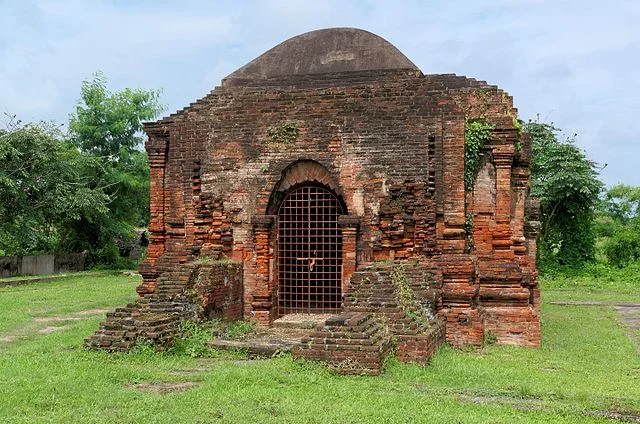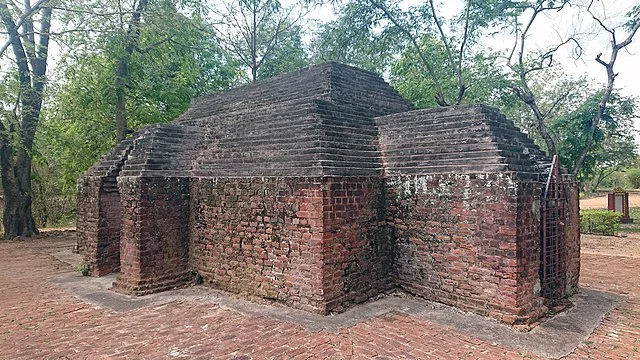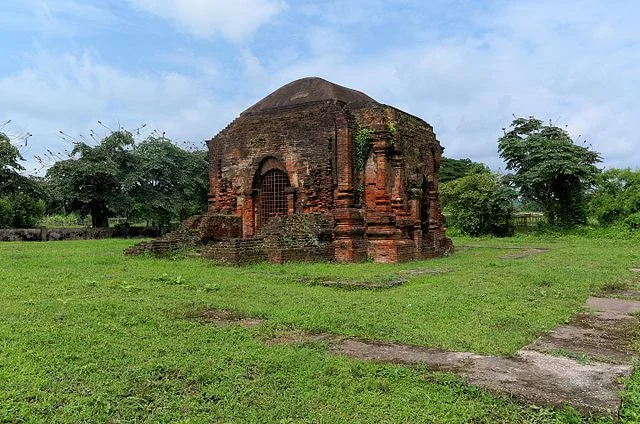Sri Ksetra, an ancient Pyu city, houses a collection of Buddhist temples in modern-day Myanmar. These temples provide insight into early Buddhism in Southeast Asia. The structures, dating back to around the 5th to 9th centuries AD, illustrate a blending of Indian, Southeast Asian, and Pyu architectural influences. As part of the Pyu Ancient Cities, Sri Ksetra is a UNESCO World Heritage site, representing one of Myanmar’s earliest urban civilizations.
Get your dose of History via Email
Historical Context of Sri Ksetra

Sri Ksetra, or Thaye Khittaya, served as the center of the Pyu civilization, which flourished from around 200 BC to AD 900. The Pyu adopted Buddhism, likely influenced by contacts with India through trade and cultural exchanges. This period saw a rise in architectural projects, including the construction of temples, stupas, and monasteries. Many of the structures that survive today were built between the 5th and 9th centuries AD, showcasing an early Buddhist architectural style that spread across Southeast Asia.
Architectural Style of the Sri Ksetra Temples

The Sri Ksetra temples reflect both Buddhist religious beliefs and the Pyu people’s connection to Indian architectural traditions. The temples typically have a cylindrical or bulbous stupa, resembling early Indian stupas. The use of brick as the primary construction material is notable. These bricks are often large, with precise interlocking techniques, indicating advanced masonry skills.
Distinct features include:
- Stupa shapes: The stupas at Sri Ksetra have rounded shapes, mirroring early Indian styles.
- Terraced bases: Temples often sit on terraced platforms, creating a multi-level structure that signifies ascension.
- Decorative elements: Although simpler in design compared to later Southeast Asian temples, these temples sometimes feature terracotta plaques with images of the Buddha or mythological figures.
Key Temples and Stupas at Sri Ksetra
1. Bawbawgyi Stupa
The Bawbawgyi Stupa is one of the most significant and well-preserved stupas at Sri Ksetra. Dating to the 5th or 6th century AD, this structure exemplifies early Pyu Buddhist architecture. The Bawbawgyi Stupa has a cylindrical shape, set on a raised platform. It lacks elaborate decorations, but its large size and simplicity highlight the stupa’s importance in Pyu culture as a religious and social landmark.
2. Payagyi and Payama Stupas
The Payagyi and Payama stupas, located near Bawbawgyi, further illustrate early Buddhist architectural styles. These structures, likely dating to the 6th century AD, have similar cylindrical forms. However, they are slightly smaller and incorporate terracotta plaques with carved images of the Buddha, signifying a shift toward more decorative elements in Pyu religious architecture.
3. East and West Hpetleik Pagodas
The Hpetleik Pagodas, known as the East and West Hpetleik, are small brick stupas decorated with terracotta reliefs. Built around the 7th century AD, these stupas reflect advanced Pyu brickwork techniques. The reliefs depict various Buddhist symbols and figures, offering a glimpse into the iconography used by early Pyu Buddhists. These pagodas are particularly valuable for their intricate design and insight into Pyu craftsmanship.
Influence of Indian and Southeast Asian Cultures
The architecture and iconography of Sri Ksetra temples reveal significant Indian influence, especially from the Gupta period. This is evident in the temples’ stupa shapes and terracotta decorations, which resemble early Indian Buddhist structures. However, unique Southeast Asian elements also appear, marking a blending of styles that would influence later Burmese and Southeast Asian temple architecture.
The spread of Pyu culture and religion likely influenced other regions in Southeast Asia. Artifacts from Sri Ksetra suggest connections with the Mon and Khmer civilizations, which later developed their own forms of Buddhist and Hindu architecture. Sri Ksetra, therefore, represents an early stage in the cross-cultural development of Buddhist architecture in the region.
Religious and Cultural Significance
For the Pyu, the temples at Sri Ksetra were more than architectural achievements. They symbolized the importance of Buddhism within the society. These structures served as places of worship, pilgrimage, and religious education. The temples housed relics and sacred texts, and monks provided teachings that reinforced Buddhist values among the Pyu people. This integration of religion and daily life made Sri Ksetra a center of religious activity and cultural continuity.
Excavations and Archaeological Findings
Archaeological work at Sri Ksetra began in the 19th century under British colonial rule, and more recent excavations have revealed artifacts and structures that illuminate Pyu civilization. Researchers have uncovered terracotta plaques, inscribed tablets, and Buddhist icons that confirm the religious significance of the temples. Some inscriptions, written in the Pyu language and using an early Indian script, provide insights into the spread of writing and literacy in the region.
The excavated artifacts indicate an advanced level of craftsmanship and trade. For instance, beads and pottery suggest that the Pyu were connected to wider trade networks across Southeast Asia, and possibly beyond. These finds are invaluable in understanding the role of Sri Ksetra as a cultural and religious hub.
Preservation and Legacy
The temples of Sri Ksetra remain an important part of Myanmar’s cultural heritage. Efforts to preserve these structures have increased since the site gained UNESCO World Heritage status in 2014. Conservationists focus on stabilizing the ancient brick structures, protecting the terracotta reliefs, and preventing damage from environmental factors. The Sri Ksetra temples not only preserve Pyu architecture but also highlight the development of Buddhist architectural styles in Southeast Asia.
In summary, the Sri Ksetra temples provide valuable insight into early Buddhist architecture and the spread of religious practices in Southeast Asia. These temples stand as enduring symbols of the Pyu civilization’s achievements in architecture, religion, and culture, bridging ancient Indian and Southeast Asian traditions in a unique historical context.
Source:

